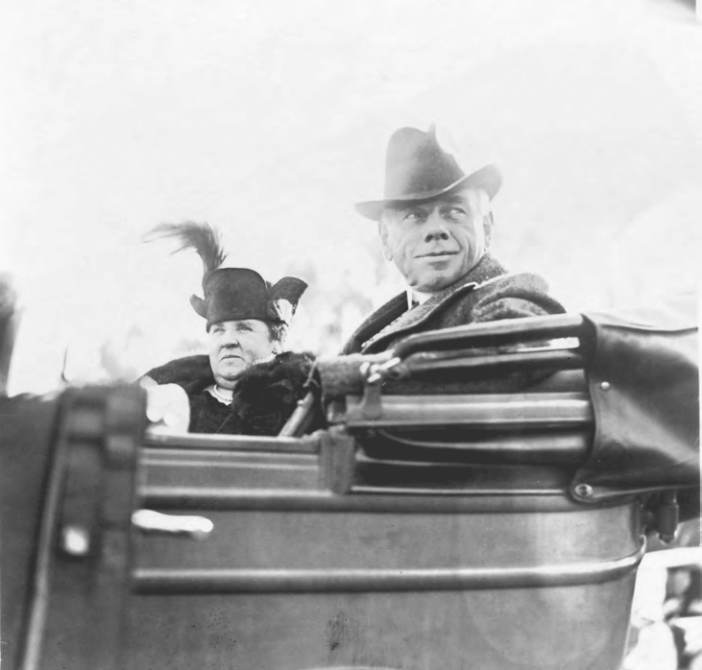Basic HTML Version


Knapp spared no expense for the Garden Club’s visit. The reporter
wrote, “Scotchmen in kilts summoned us to luncheon with the sound of
bagpipes and marched about until the call was heard and we all assembled
in the ‘hall of mirrors,’ a great outdoor arcade where the tables were gay
with roses
Claudius Pernet
and
Radiance
– and pins were provided in case
we wished to carry off a flower; as we sat at luncheon, softly shaded from
the California sunshine, a stringed orchestra made melody for us on the
lawn outside.”
Over the years, Knapp kept adding land to his estate until the
original 70 acres more than doubled in size. In 1923, Knapp formed a
real estate holding company called Union Realty and hired Robert S.
Hyde, developer of several tracts in Montecito, to head the firm. Union
Realty spent the next 14 years buying and selling property and creating
subdivisions. The company was dissolved in 1937 when Knapp’s declining
health prompted him to place most of his property in his son’s name and
he began to relinquish the administration of his estate and businesses to
William Jared Knapp.
C. K. G Billings with Louise Savage Knapp at the polo grounds in Montecito
(Courtesy Santa Barbara Historical Museum)
Knapp organ room at Arcady (Courtesy Santa Barbara Historical Museum)
Sharing the Wealth
In addition to providing living quarters for Arcady’s servants and
gardeners, Knapp was incredibly generous to others who worked for
him, often providing housing designed by noted architects like Mary
Craig on parcels in Montecito. When the Great Depression reached
its peak, Knapp created his own WPA project by hiring stonemasons
to build a wall around his estate.
About 1939, Dion Kennedy, nationally renowned organist and
composer of sacred music, arrived in Santa Barbara and became
Knapp’s personal organist as well as organist at All Saints By-the-Sea
Episcopal Church on Eucalyptus Lane. Kennedy often played to a
private audience of one at Arcady’s music pavilions as the setting
sun illuminated the mountains. Presumably with Knapp’s aid,
encouragement and guidance, the organist purchased a piece of the
Knapp lands off Barker Pass near the City reservoir and created a
small subdivision of English cottages designed by Harriet Moody.
In the first years, renters were often sponsored by Knapp. Cottage
Hospital doctors, WWII veterans, single women, relatives, and
others whose lives and stories affected him were offered lodging.
Even his daughter, Sarah Estelle Knapp Russell, and her husband
lived there in 1942. Eventually, the houses and additional empty lots
were sold on condition that new structures and additions in the next
20 years conformed to English cottage architectural style.
In 1945, Knapp’s dietician, Mildred Wright, moved to Mulberry
Cottage which Knapp had given to her back in 1941. Mildred had
quickly become Knapp’s companion as well as dietician and her
family became his family. He helped her brother David by buying
him his first car and supporting his college and medical studies.
David returned to Santa Barbara in 1953 to work with Dr. Nuzum,
Knapp’s personal physician at Cottage Hospital, before establishing
his own practice. Knapp’s largess went so far as to pay for the college
education of a needy student of Mildred’s aunt, Amy Morrell.

